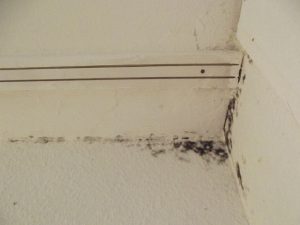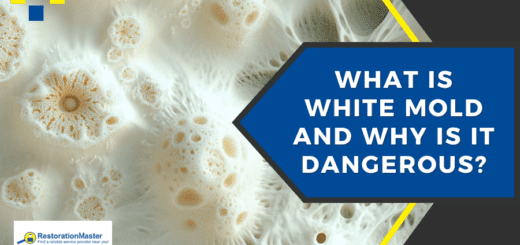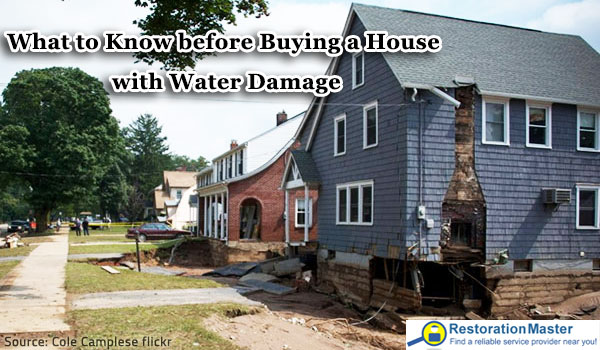How to Prevent Mold in the Bathroom
No matter how much you clean, it can seem almost impossible to prevent mold in the bathroom. But because there is constantly moisture in this area after taking showers, it makes sense why the fungus would constantly grow here. On the other hand, there are steps you can take to deter it from growing, simply just by removing the moisture.
Here are some tips on how to prevent mold in the bathroom:

- Turn on the bathroom fan as soon as you are done taking a shower or bath. Allow it to run for 30 minutes afterwards to remove all remaining moisture.
- Waterproof any grout lines with a standard sealer.
- Keep the overall humidityHumidity is the amount of moisture or water vapor present in... More set below 50%; consider using a dehumidifierA dehumidifier is a device that removes excess moisture from... More or air conditioner
- Remove soap and shampoo bottles from the shower as they prevent excellent places for moldMold is a type of fungus that grows in damp or humid conditi... More to hide.
- Replace/wash your shower curtain on a regular basis. Consider getting one that is mold-resistant.
- Frequently wash bathroom rugs.
How to Remove Mold in the Bathroom
If you have any moldMold is a type of fungus that grows in damp or humid conditi... More that is currently growing on the floors or walls, here is what you can do to remove it:
-
- Remove any caulking or sealant affected by moldMold is a type of fungus that grows in damp or humid conditi... More growth.

- Open windows to bathroom or surrounding rooms to ventilate the smell from the chemicals.
- Combine a mixture of detergent and water.
- Thoroughly scrub the affected area.
- Allow the surface to dry completely when done.
If the moldMold is a type of fungus that grows in damp or humid conditi... More still remains:
- Combine a mixture of 10% bleach and 90% water
- Pour it into a spray bottle and spray it on the affected area without scrubbing it.
- Allow it to sit for 10-12 minutes, rinse it thoroughly, and let it dry.
If the moldMold is a type of fungus that grows in damp or humid conditi... More still remains, go ahead and call a mold remediation professional. The technicians will use advanced products that will effectively remove the moldMold is a type of fungus that grows in damp or humid conditi... More at its source without causing additional damage to the building material. They can also inspect the area to identify additional at-risk building materials.
Common Causes of Mold in the Bathroom
-
- Lingering moisture from showers and baths
- Plumbing problems, including leaking sinks, toilets, and pipes
- Water damaged building materials and contents, including wood flooring, carpeting, rugs, and other fabrics
To prevent moldMold is a type of fungus that grows in damp or humid conditi... More in the bathroom, ensure that all plumbing work is in good condition and that there is no lingering moisture in any part of the property.
How to Find Mold in the Bathroom
While many types of moldMold is a type of fungus that grows in damp or humid conditi... More are visible, others are hidden, such as behind the wall, under the sink, and even in cabinets. Here are some ways to find hidden mold:
1.Notice signs of allergies, including watery eyes, coughing, heightened asthma issues, etc.
2.Inspect hidden areas, including:
- Behind walls
- In cabinets
- Under flooring
- Around air vents
- Basements and crawlspaces under the bathrooms
- Behind the bathroom door
At any time you find hidden moldMold is a type of fungus that grows in damp or humid conditi... More that covers an area larger than 10 square feet, don’t hesitate to call a professional mold removal company. An area this large must be handled with professionals equipment and products in order to be restored safely and properly.
RestorationMaster: Mold Remediation Professionals
 When searching for professional mold remediation services, the technicians of RestorationMaster are licensed and certified. They each have years of experience when it comes to removing all parts of the fungus. They can also work with your insurance company during the claims process, if needed.
When searching for professional mold remediation services, the technicians of RestorationMaster are licensed and certified. They each have years of experience when it comes to removing all parts of the fungus. They can also work with your insurance company during the claims process, if needed.
No matter the location of the moldMold is a type of fungus that grows in damp or humid conditi... More or how far it has spread, these professionals can handle the job on both residential and commercial properties. But it is important that they be called as soon as the moldMold is a type of fungus that grows in damp or humid conditi... More is found because the damage will continue to spread, affecting new materials, not to mention threaten the health and safety of everyone on the property. Don’t hesitate to give them a call for a free estimate!













